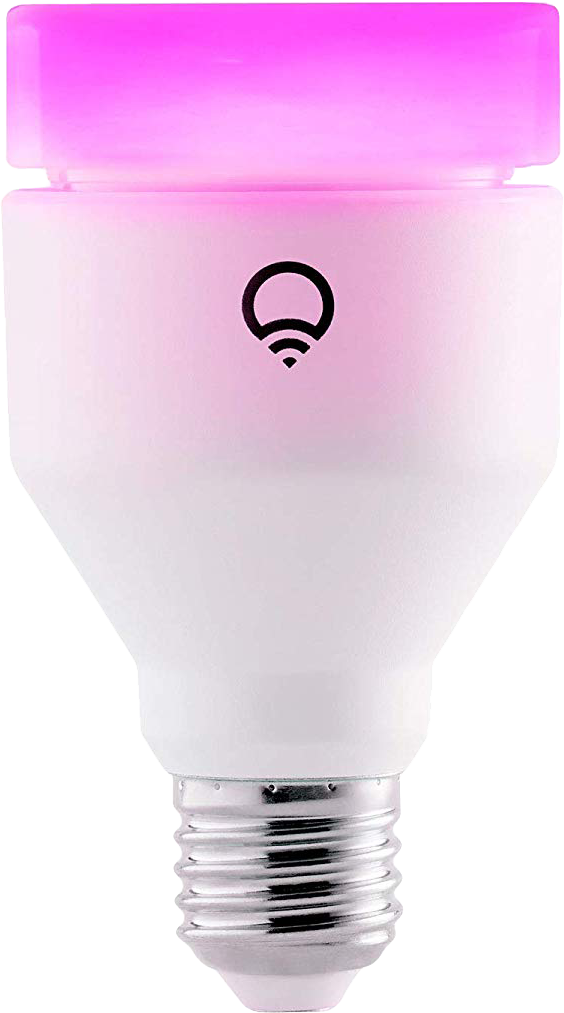Best answer: LED bulbs, including smart lights, are much more energy-efficient than older incandescent bulbs, but the higher upfront cost of smart bulbs means you won't break even for a while.
Amazon: LIFX Color 1000 ($50)
Upfront costs
Smart home brands love to tout their bulbs as being energy-efficient, saving you money in the long term, and while you can certainly cut your electric bill by a decent amount by switching to LED bulbs, you need to consider the significantly higher upfront costs involved with getting smart lights.
Smart lights will cost you more upfront, but if you're coming from incandescent bulbs, you'll save quite a bit annually.
Popular brands like Philips Hue and LIFX charge anywhere from $20 to $50 per bulb, depending on factors like shape, size, and whether they can output different colors or simply varying shades of white. If you go the Philips Hue route, you'll also need to factor in the Hue Bridge needed to link them together, adding another $50 upfront.
By contrast, a regular LED bulb averages at about $5. Philips sells a whopping 24-pack of its 800-lumen LED bulbs for just $30 — that's $10 less than a single White and Color Hue bulb. Even considering the shorter lifespan of Philips' standard bulbs (11,000 hours versus 25,000 on Hue bulbs), you could quite literally buy hundreds of regular LED bulbs for the same price you'd pay to outfit your entire home with Hue lights.
The same goes for incandescent bulbs. In the same 25,000 hours that a Philips Hue or LIFX bulb is rated for, you'll go through around 25 incandescent bulbs, but at only about a dollar per bulb, they're easily replaceable — you might actually spend more on gas getting to the hardware store and back than on the bulb itself. Make no mistake, smart lights will always be the most expensive option upfront.
Annual savings
Those savings advertised by smart home brands aren't a lie, though. If your house is outfitted with old incandescent bulbs, switching to smart bulbs, which are almost universally LED, can save a considerable amount on your electric bill year-round. Incandescent lights aren't very energy efficient, and though utility prices can vary by location and time of year, a single 60W incandescent bulb typically costs around $4.80 a year, per Energy.gov.
If your house has, say, 20 light bulbs in total (that may be undershooting it, given how many rooms typically have ceiling fixtures that use multiple bulbs), that's $96 each year in lighting alone. By the same figure, a 12W LED bulb only costs about a dollar a year, meaning that lighting the same 20-bulb house would cost just $20 annually. That $76 difference each year can certainly add up over time, but given how much more you're paying upfront on the smart bulbs themselves, it'll take a long time before you break even, let alone start saving money.
If you're concerned with the added cost of leaving your light switch on at all times with smart lights, don't be. Smart lights in their idle state do draw a bit of power, but the difference is negligible — somewhere in the range of an extra 30 to 50 cents annually.
Features over cost efficiency
Don't buy smart bulbs with the express intent of saving money on your electric bill. While you will pull ahead eventually, it's far more cost-effective to buy regular LED bulbs, which yield the same low annual costs without the heavy investment upfront.
Instead, you should buy smart lights because you appreciate the convenience they introduce to your home. Buy smart lights because you can control them with your phone or voice, or because they can be scheduled to turn on and off automatically at certain times and under certain conditions. Buy them because you want more color options than just white for your home. For all else, you might be better suited with regular light bulbs.
Our pick
LIFX Color 1000
Buy for the smart features, not the cost savings.
Smart lights won't always save you money, but they have plenty of other benefits like colored lighting, wireless controls, and scheduling. LIFX's excellent bulbs are bright, vivid, and work without a hub.


Tidak ada komentar:
Posting Komentar